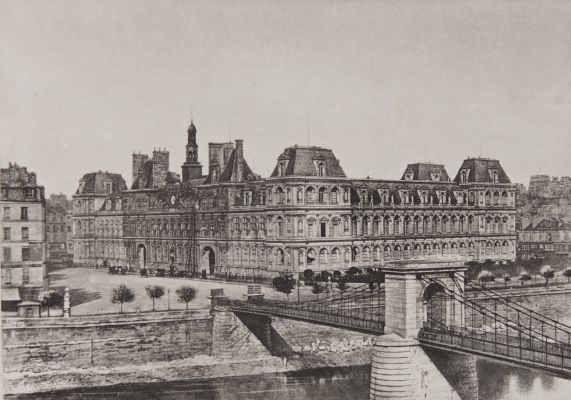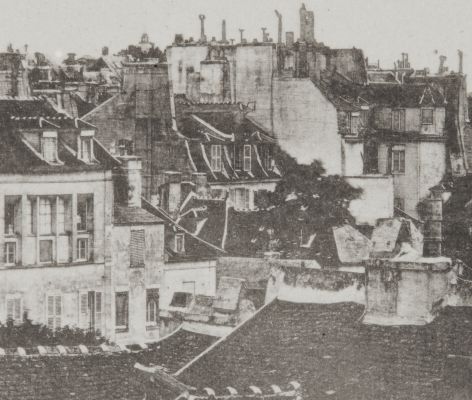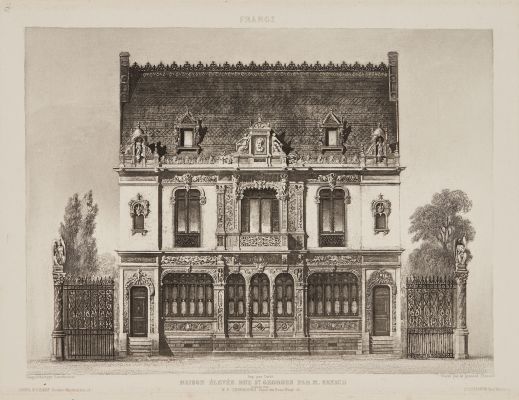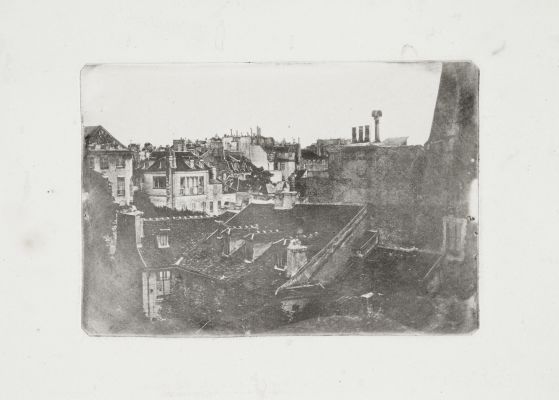
Title
Vue de Toit, Quartier St. SulpiceArtist
Fizeau, Louis Armand Hippolyte (French, 1819-1896)Key FigureDate
1843Process
Photogravure (Fizeau process)Atelier
Fizeau, Louis Armand Hippolyte (school of)Image Size
8 x 7 cm
Hippolyte Fizeau, a French physicist, became fascinated with the potential reproducibility of daguerreotype photography soon after it was announced in 1839. Encouraged by the engraver Lemaître, and assisted by the aquatinter Johann Hürlimann, Fizeau’s experiments focused on adapting the traditional etching process to the daguerreotype plate in an effort to reproduce the image. In 1840 Fizeau developed a method of increasing the brilliance of daguerreotypes by toning the image with a solution of gold chloride. In 1841 Fizeau patented a process for etching daguerreotypes by converting the silvered daguerreotype plate into an intaglio printing plate, and printing the duplicated image on paper. In 1842 his process was used for three illustrations in Lerebours’ Excursions Daguerriennes. These prints mark the first illustrations in book form to be created by a photomechanical process.
Fizeau’s complicated and expensive method soon lost favor when the reproducibility challenge seemed to be solved by Talbot’s printable calotype paper negative. It wasn’t until the impermanence of these calotypes and prints became an issue that attention was returned to photogravure in 1853.
References
Hammann, J.-M.-Herman. Des Arts Graphiques Destinés a Multiplier Par L’impression: Considérés Sous Le Double Point De Vue Historique Et Pratique. Genève [etc.: JoëlCherbuliez, 1857 P. 451
![[Rooftops, Paris]](https://res.cloudinary.com/markkatzman/image/upload/c_scale,h_400/v1/master/Fizeau_07.jpg)




![[Rooftops, Paris]](https://res.cloudinary.com/markkatzman/image/upload/c_scale,h_400/v1/master/Fizeau_06.jpg)



